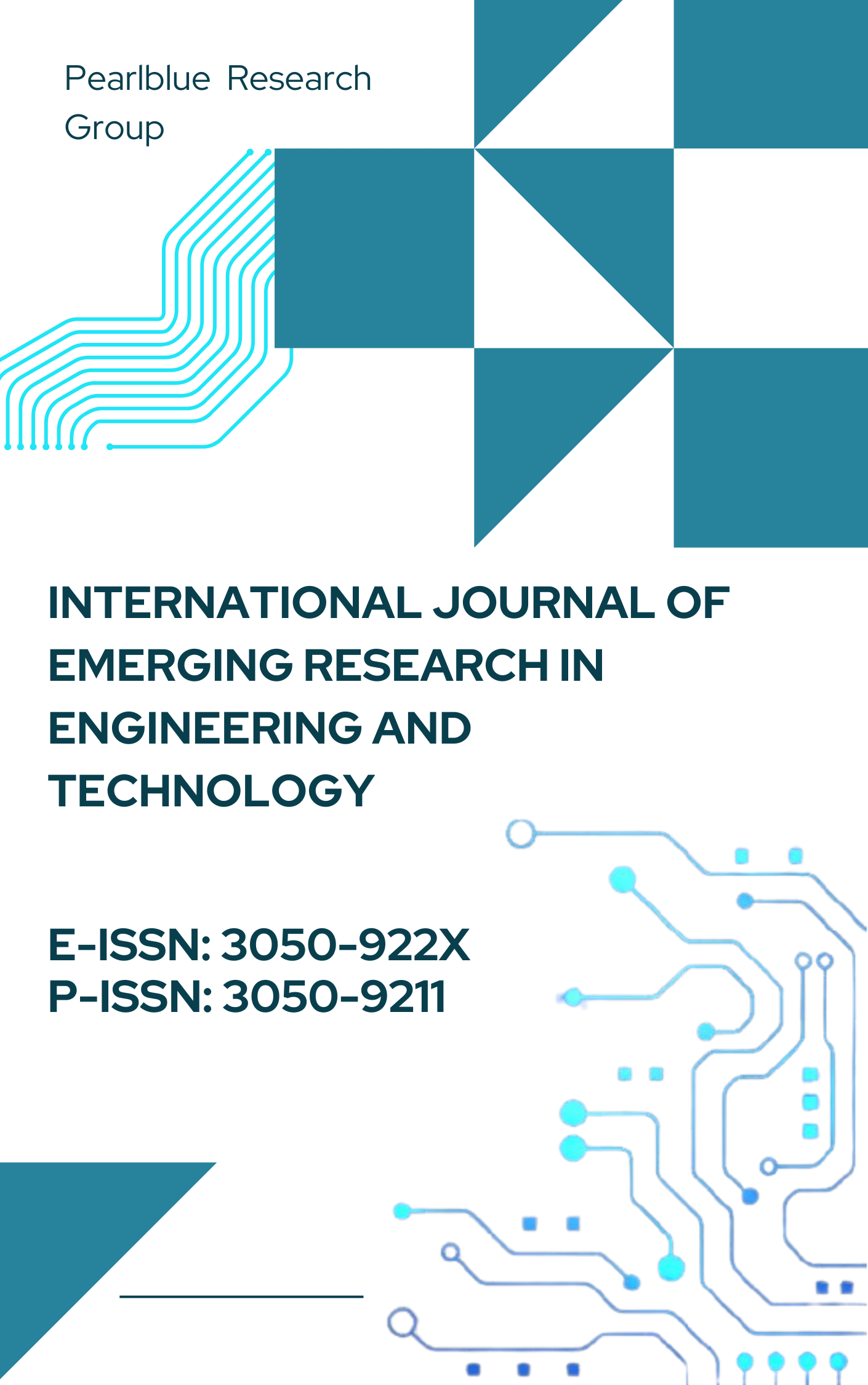AI-Driven Security for Financial Transactions: Leveraging LLMs, Federated Learning, and Behavioral Biometrics
DOI:
https://doi.org/10.63282/3050-922X.IJERET-V5I4P107Keywords:
large language models (LLMs), federated learning (FL), graph neural networks (GNNs), privacy-preserving AI, explainable AI (XAI), regulatory compliance, cybersecurity in financeAbstract
The rising sophistication of cyber threats ranging from phishing and synthetic identities to adversarial model attacks has made the demand for intelligent, adaptive security solutions in financial systems more urgent than ever. This study explores key AI technologies that are shaping the future of secure financial transactions, including Large Language Models (LLMs), Federated Learning (FL), Graph Neural Networks (GNNs), and behavioral biometrics. For each technology, we outline its core architecture, operational mechanisms, and applicability in real-world fraud detection systems. LLMs enable contextual understanding of transaction narratives, aiding in the detection of phishing attempts across various communication channels. FL facilitates collaborative model training across multiple financial institutions without compromising user privacy. GNNs leverage the relational structure of transaction networks to uncover fraud rings that evade traditional rule-based systems. Behavioral biometrics offers continuous authentication by analyzing passive user attributes such as typing patterns and device interaction. A comparative analysis demonstrates the advantages of these AI approaches over conventional methods, highlighting improvements in detection accuracy, scalability, and privacy preservation. The review also addresses critical challenges including data imbalance, latency, model drift, and regulatory constraints. Together, these insights provide a comprehensive foundation for understanding how AI, when applied responsibly, can enhance the integrity and resilience of financial ecosystems
References
[1] P. Gomber, J. Kauffman, C. Parker and B. Weber, "On the fintech revolution: Interpreting the forces of innovation, disruption, and transformation in financial services," J. Manage. Inf. Syst., vol. 35, no. 1, pp. 220–265, 2018.
[2] S. Dixit and J. Jangid, "Exploring smart contracts and artificial intelligence in FinTech," J. Inf. Syst. Eng. Manage., vol. 10, no. 14s, pp. 282–295, 2025. [Online]. Available: https://doi.org/10.52783/jisem.v10i14s.2208
[3] M. Bojilov, Methods for assisting in detection of synthetic identity fraud in credit applications in financial institutions, Ph.D. dissertation, CQUniversity, 2023.
[4] S. Dixit, "The impact of quantum supremacy on cryptography: Implications for secure financial transactions," Int. J. Sci. Res. Comput. Sci. Eng. Inf. Technol., vol. 6, no. 4, pp. 611–637, 2020. [Online]. Available: https://doi.org/10.32628/CSEIT2064141
[5] N. S. Al-Musib, et al., "Business email compromise (BEC) attacks," Mater. Today: Proc., vol. 81, pp. 497–503, 2023.
[6] V. Mahalakshmi, et al., "The role of implementing artificial intelligence and machine learning technologies in the financial services industry for creating competitive intelligence," Mater. Today: Proc., vol. 56, pp. 2252–2255, 2022.
[7] F. Ahmed, "Quantum-resistant cryptography for national security: A policy and implementation roadmap," Int. J. Multidiscip. Sci. Manage., vol. 1, no. 4, pp. 54–65, 2024.
[8] A. Winograd, "Loose-lipped large language models spill your secrets: The privacy implications of large language models," Harv. J. Law Technol., vol. 36, pp. 615, 2022.
[9] L. Bellomarini, E. Laurenza, and E. Sallinger, "Rule-based anti-money laundering in financial intelligence units: Experience and vision," in Proc. RuleML+ RR (Suppl.), vol. 2644, pp. 133–144, 2020.
[10] P. M. Mammen, "Federated learning: Opportunities and challenges," arXiv preprint, arXiv:2101.05428, 2021.
[11] P. Kałużny, "Behavioral biometrics in mobile banking and payment applications," in Proc. Int. Conf. Bus. Inf. Syst., Cham: Springer, 2018.
[12] I. de Zarzà, et al., "Optimized financial planning: Integrating individual and cooperative budgeting models with LLM recommendations," AI, vol. 5, no. 1, pp. 91–114, 2023.
[13] J. Nicholls, A. Kuppa, and N.-A. Le-Khac, "Financial cybercrime: A comprehensive survey of deep learning approaches to tackle the evolving financial crime landscape," IEEE Access, vol. 9, pp. 163965–163986, 2021.
[14] K. C. Aguoru, An empirical investigation of the causes and consequences of card-not-present fraud, its impact and solution, Ph.D. dissertation, Univ. East London, 2015.
[15] N. Zachosova and N. Babina, "Identification of threats to financial institutions’ economic security as an element of the state financial security regulation," Baltic J. Econ. Stud., vol. 4, no. 3, pp. 80–87, 2018.
[16] Y. Li, et al., "Large language models in finance: A survey," in Proc. 4th ACM Int. Conf. AI Finance, 2023.
[17] S. Wu, et al., "Bloomberggpt: A large language model for finance," arXiv preprint, arXiv:2303.17564, 2023.
[18] O. Campesato, Transformer, BERT, and GPT: Including ChatGPT and Prompt Engineering, 2023.
[19] J. Vos and B. van Rijn, "The evidence-based conceptual model of transactional analysis: A focused review of the research literature," Transact. Anal. J., vol. 51, no. 2, pp. 160–201, 2021.
[20] F. Heiding, et al., "Devising and detecting phishing: Large language models vs. smaller human models," arXiv preprint, arXiv:2308.12287, 2023.
[21] W. Yang, et al., "FFD: A federated learning based method for credit card fraud detection," in Proc. BigData 2019: 8th Int. Congr. as part of SCF 2019, San Diego, CA, USA, Jun. 25–30, 2019.
[22] T. Suzumura, et al., "Towards federated graph learning for collaborative financial crimes detection," arXiv preprint, arXiv:1909.12946, 2019.
[23] J. Wang, et al., "A review on graph neural network methods in financial applications," arXiv preprint, arXiv:2111.15367, 2021.
[24] Eberz, et al., "Evaluating behavioral biometrics for continuous authentication: Challenges and metrics," in Proc. ACM Asia Conf. Comput. Commun. Security, 2017.
[25] A. Dalsaniya, "AI for behavioral biometrics in cybersecurity: Enhancing authentication and fraud detection," Int. Res. J., vol. 10, pp. a108–a122, 2023.
[26] J. Jangid and S. Dixit, The AI Renaissance: Innovations, Ethics, and the Future of Intelligent Systems, vol. 1, Technoscience Academy, 2023.



